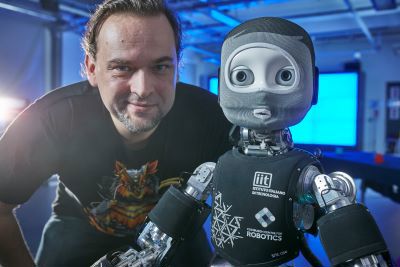I read with great interest news of a “breakthrough” in robotics motion technology by a research team at Tohoku University in Japan. You hear that word a lot these days but I’m always hopeful of something that really will change the game.
The researchers have replicated human-like variable speed walking using a musculoskeletal model steered by a reflex control method, which they say is akin to the human nervous system. An algorithm has been developed to optimise energy efficiency, crucial for replicating humans’ natural, variable walking speed.
So why is this important, and is it really a “breakthrough”? Well, making robots energy efficient is crucial if we’re to see them strolling down our streets anytime soon. A walking robot needs considerable battery power and battery technology hasn’t developed sufficiently to give a bipedal (two legged) robot the power durability required for lengthy operation. This is partly due to the computational power needed to move the robot, which drains the battery quickly.
So, the team at Tohoku considered how the human body works, specifically the reflex action and control. We’ve all been hit in the knee with a rubber hammer by a doctor testing our reflexes. The responding ‘kick’ has nothing to do with the brain as the neurons fire directly from the spinal cord. It’s a quick response that requires less brain or computational power. Inspired by human gait generation, the researchers from Tohoku now present a method that extends existing reflex-based control systems, including velocity control, to identify the main contributors to reducing energy consumption during gait generation.
Now, did you know it is impossible for humans to stand absolutely still? Micro-movements such as muscle contractions, adjustments in posture to maintain balance, small shifts in weight distribution, heartbeat, breathing, and even the subtle movements of our eyes and internal organs, most imperceptible to the naked eye, are constantly occurring. Humans are constantly moving, and in doing so, our gait is constantly changing. The brain makes subtle adjustments to keep us upright which uses quite a bit of computational power and this is difficult to translate into robotics. In terms of trying to do this, I understand the Tohoku team’s method provides excellent analysis to identify essential factors that will deliver a more energy-efficient control system. It’s a long way from being as good as our own biological systems, but it is closer than before.
The claim that this is “akin” to the human nervous system I am a little bit more careful about. A bit like artificial intelligence (AI) is described as akin to our neural networks, it is obviously a representation of our nervous system but considerably simpler.
One area where this research will be very welcome is in the field of prosthetics. Advanced prosthetics require a lot of computation, and just like bipedal robots, they have limited battery power. Microprocessor-controlled and powered prosthetic legs, for example, have a battery life of about eight hours, so you have to plan your day around charging your legs. A more straightforward, reflex-based system which can seamlessly be driven over a wide range of velocities means less computational demand and, therefore, longer battery life.
Perhaps the most important part of this research is how we learn more about ourselves in striving to develop robotics. To successfully implement systems such as this one in a robot, we must first fully understand how our own system works. It requires a multi-disciplinary approach, bringing together psychologists, neuroscientists and others, which, in turn, often means our understanding of the human condition develops. For example, back in the early days of AI we thought that teaching a computer to play chess was giving that computer intelligence. We have since changed our definition of intelligence in this regard. The best computer systems will now beat a human chess grandmaster nine times out of ten, but it’s all in the programming, the computer isn’t ‘thinking’.
So back to my original question, is this really a “breakthrough”? Elon Musk has made bold claims about the progress of his Optimus robot, proudly boasting that it’s "improved balance and full body control" means it can do squats in the gym and even boil an egg thanks to tactile sensing tech on its fingers. The thing is, if you look under the hood, it's just better execution on existing tech plus what he brings in from the cars. I’m not decrying it; his star quality has raised awareness of and interest in humanoid robotics, which was needed to jump-start industrial-level development; it’s just that he’s not made any real breakthroughs yet. He’s made a quantitative jump, not so much a qualitative one but hopefully is going to increase the availability of reliable and standardised platforms to accelerate the potential for the qualitative changes. However, the qualitative jump the Tohoku team has made will help the robotics community to improve the energy-efficiency in humanoids and beyond.
In the end, robotics is all about increments and solving little sections of the jigsaw puzzle. Is this game changing? No, but it is an important step forward and forward motion is everything in this game.

Ingo Keller, head of Robotics, the National Robotarium at Heriot-Watt University











National Gas receives funding to develop Gravitricity underground hydrogen storage system
One single rock salt mine - Winsford - has 23 <i>MILLION </i>cubic metres of void and even allowing for 10% of that void set aside for hazardous waste...